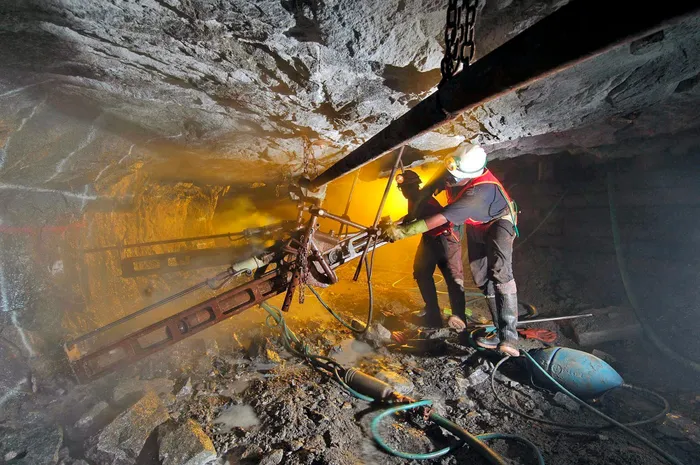Mining input costs decelerate in May despite year-on-year surge

This does not bode well for employment in the industry that is already forced to retrench thousands of workers as a result of loss-making shafts and low commodity prices. Photo: SUPPLIED
Although South African mining companies registered a 6.6% year-on-year rise in input costs, there was a 0.6 percentage point deceleration on a month-on-month basis as gold miners continued to face average input cost inflation.
Apart from battling logistical constraints such as bottlenecks in rail and port efficiencies, SA miners are having to content with rising costs.
In May, the Minerals Council yesterday said mining costs rose 6.6% compared to May, 2023.
This does not bode well for employment in the industry that is already forced to retrench thousands of workers due to loss-making shafts and low commodity prices.
“One of the main factors driving input cost inflation in May was the 2.6% increase in prices for other chemicals and man-made fibres. This category includes mining chemicals, chemical catalysts, and prepared explosives used extensively in mining,” the council said.
Moreover, the basic chemicals input prices rose by 2.3% in May compared to April this year, driven mainly by higher ammonia nitrate and other fertiliser prices.
There was, however, a 4.5% month-on-month decrease in prices of transport and storage. This was reflective of lower road freight costs and an improved payload-income ratio for freight transportation in the mining sector.
The 0.6 percentage point deceleration in the month-on-month mining cost inflation was in alignment with the broader decline in the SA producer price index that fell to 4.6% year on year.
However, more cost pressures for the mining sector were likely to emanate from the electricity sector.
“Going forward, we expect electricity prices to continue exerting upwards pressure on mining input costs, with further increases expected in mid-June and the start of July, as winter tariffs and local municipal increases kick in,” the council said in its analysis report.
“The analysis of individual components contributing to total mining input cost inflation in May, 2024 reveals persistently high inflation rates for electricity, which increased by 12.8% year on year.”
This comes as the National Energy Regulator of SA (Nersa) increased electricity tariffs by 12.74%, effective on April 1.
This increase was relative to the production, collection, and distribution of electricity by Eskom.
During May, SA gold miners experienced the highest average increase in input cost inflation, with their costs surging for the fifth consecutive month.
Gold miners topped the list of higher cost metals which includes coal and quarrying, as well as platinum group metals with sustained depressed commodity prices.
Costs for finance, insurance, real estate, and business services for May also remained elevated at 11.8% year on year, reflecting the increased cost of lending and trade financing.
Additionally, coke and refined petroleum costs rose by 9.2% year on year, driven primarily by an increase in Brent crude prices, which averaged $83.1 a barrel in May, compared to $75.8 a barrel a year earlier.
The increased costs of Brent crude translated into more expensive petrol, diesel and engine oils among others, which are used extensively in mining.
Machinery and equipment costs for May increased by 7.1% over the prior year.
Furthermore, the strengthening of the nominal effective exchange rate by 7.0% compared to the same month in 2023 helped reduce costs of imported intermediate inputs for the sector.
BUSINESS REPORT